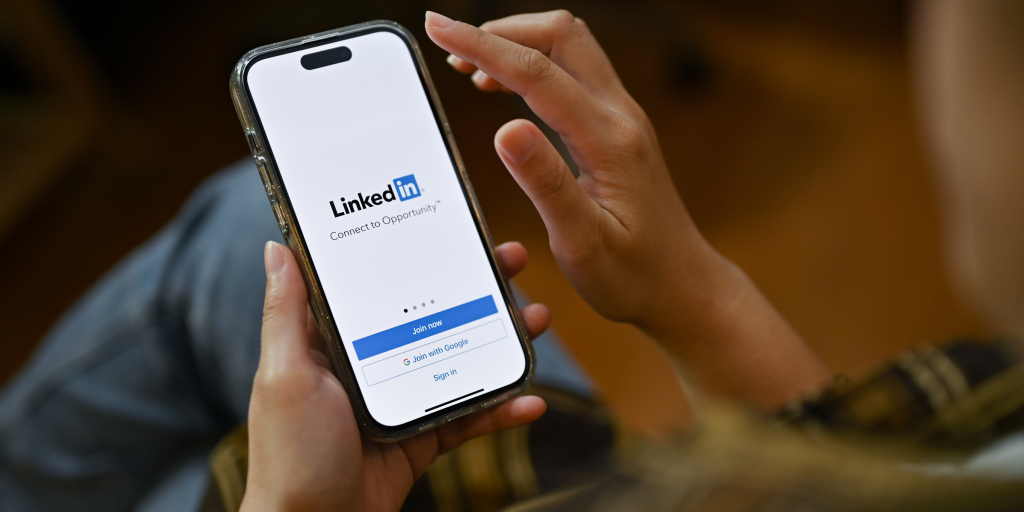Keep premium content gated
One of the tried and tested methods for B2B lead generation is to use gated content. Gated content refers to content that users can only access by entering their contact information. This is a common way for businesses to gather information from the visitors to their website, generate new leads and sales.
It is worth pointing out that this does not mean that you demand subscriptions or some form of financial payment for your content. To access the gated content on the website, visitors need to provide their personal and contact information.
In order to maximise the leads generated from gated content, your business has to ensure that most of the premium content on the website is gated. Gating premium content helps you give real value to your consumers in exchange for their contact information.
Premium content like eBooks, white papers and webinars will get many clicks from visitors who are genuinely interested in your business and possibly your product. These are the best visitors to get contact information from and engage further to make sales. This is why your company should always keep a gate to your website’s premium content.
Give old content a new twist
Another tactic you can use for B2B lead generation is to repurpose old content. Normally as part of the content life cycle, content is created, used, and left up as a testament to the business’ historical work. However, this does not have to be the end of that content’s life cycle, especially if it got a good response from the target audience.
Whenever you are creating new content, it is not easy to know how that content will perform. However, you will have a reference point for how you expect that content to perform with old content. A campaign that generated many page visits and lead conversions could be repurposed and used to generate even new leads and create new visits and speak to new demographics.
For example, a long interview or video posted to the website can be cut up into short-form videos and posted as multiple shorts highlighting certain takeaways to different demographics. This will make each short video speak to a specific demographic efficiently because they will not have to watch the entire video to watch the most relevant part. Furthermore, the short videos, in general, would appeal to younger and busier demographics that do not have much time to watch long videos.
The example above is just one example of how old content could be repurposed for B2B lead generation. Other examples include reproducing research and other findings as infographics, re-using successful influencer posts and many others. So do not let good content go to waste.
Create online assessments, calculators, and quizzes
Interactive content has also been known to assist B2B lead generation. When classifying the types of content, you can generally put it into two categories, static and interactive content. Static content refers to the content that readers consume by simply viewing or reading. On the other hand, interactive content requires active engagement on the part of the audience.
Tools like online assessments, calculators and quizzes are examples of interactive content that you could use to create more interactive and engaging experiences with users that could easily become leads. One of the best ways of generating leads is creating engaging content. One way of creating engaging content is by creating highly interactive content, which users typically prefer over static content.
For example, 43% of consumers prefer interactive video content over the other forms of video content. This is because interactive video content gives consumers the ability to choose what they want to see and when they want to see it. This engagement level created by the interactive content leads to a higher chance of lead creation and nurturing. That is why 62% of B2B marketers are already using interactive content to generate new leads.
Refresh old CTAs
To maximise B2B lead generation from your website, it is important that you adopt a continuous redesign policy of your calls to action (CTAs). It is difficult to get your CTAs spot on at the first time of asking. As a result, it is best to keep reiterating your CTAs even as they get old and out of fashion.
The best way to improve your CTAs is to use analytics to assess the response and lead generation rates for the various versions of your call to action that you put out. You can also use A/B testing to assess the quality of one iteration of the CTA against another.
Refreshing your CTAs helps you make sure that they remain relevant even as time passes, and they make old content seem up to date. It will also help you generate new leads from old content. You can update several elements about the call to action to make it more engaging and appealing to your potential leads.
Some of the various elements that you can update to maximise lead generation even from old content include the CTA’s copy, the design and placement of the CTA, and the tone. This incredible versatility of the CTAs means that you have a lot of experimenting to do before you can identify the best presentation for your CTA to maximise your B2B lead generation.
Use exit-intent pop-ups
Exit-intent pop-ups are those pop-ups you get as you try to leave a site. They invite you as the visitor to execute at least one call to action before you leave the page. If you do not already, you should incorporate them into your website to generate more leads from visitors who have otherwise left your website without responding to a CTA.
Websites with exit-intent pop-ups use various aspects of the visitor’s navigation to deduce when they are about to leave and prompt them to respond to a call to action before leaving the site. Some of the visitor behaviors that are observed include;
- Placement of the cursor
- How far the site visitor scrolls on the page
- How long a visitor stays idle on the site
- Previous site visit and activity
If these trackers are found to indicate that your visitor is about to leave the page, then a pop-up will appear on the screen asking the visitor to execute one task or respond to a call to action before they do. Your exit-intent pop-up must offer the visitor value in exchange for the information you want from them. Some of the popular offers you can use for B2B lead generation in exit-intent pop-ups include;
- Coupon vouchers for discounts
- Offers to save the contents of a shopping cart
- Directing visitors to a new site tool
- Asking visitors to complete a survey




